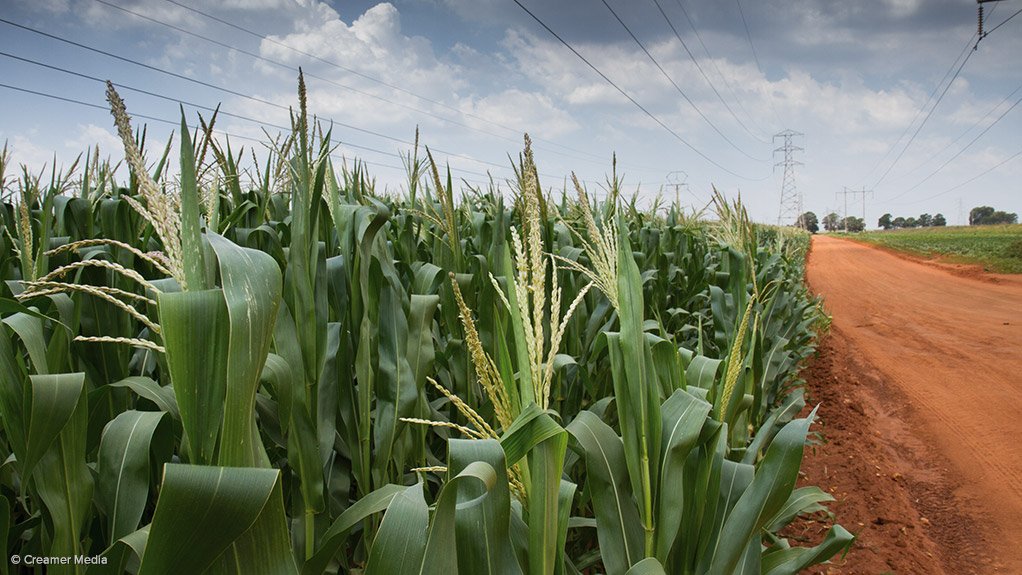Food affordability improved in nearly 75% of countries from September to November 2014, largely owing to a 2.8% decline in global food prices, which are forecast to fall further still.
This is according to the results of the Economist Intelligence Unit’s (EIU’s) latest Global Food Security Index (GFSI) quarterly price adjustment update released this month.
As stated by the Food and Agriculture Organisation, global food prices had been falling since the end of August 2014, when they reached their lowest level in four years. Prices continued to decline, reaching another new four-year low in November.
The GFSI, sponsored by science and engineering company DuPont, revealed that all-time-high production levels of corn, wheat and soybeans, and falling global oil prices, had resulted in improved food security outlooks for 79 of the 109 countries in the index.
GFSI affordability scores improved by an average of 1.3% between September and November, while overall food security scores rose by an average of 0.5%.
Hungary and Botswana experienced the greatest rank improvements in the food affordability category since the last quarterly update in August – rising six and five places respectively.
“Hungary’s rise was partially a result of falling fruit and vegetable prices driven by a good year for crops and the price-dampening impact of Russia’s import embargo. A large decline in the price of sugar was another driving factor,” the GFSI found.
The major factors contributing to the drop of food prices in Botswana, a net food importer, were the weakening of the South African rand, which kept production costs down in South Africa, and a continued decline in inflation.
Israel had the largest decline in both the food affordability and security categories, while Bostwana had the greatest score increase. “Despite significant score improvements, few countries experienced changes in their overall GFSI rankings. Denmark and Australia, however, each climbed four places, while Switzerland fell five places,” the GFSI revealed.
EIU global forecasting director Leo Abruzzese noted that during the last 25 years, food and energy prices had tracked each other closely. Therefore, the 60% decline in the price of crude oil since July 2014 was “good news for food security”, as falling oil prices lowered transportation costs.
However, the full impact of cheaper oil on local consumer prices, political stability and the fiscal positions of oil exporters and importers would only play out in the months to come. The effects at a national and global level would be captured by the GFSI in the longer term.
SUB-SAHARAN AFRICA
DuPont sub-Saharan Africa regional director Dr Richard Okine believed the latest GFSI results reflected progress in the attempt to improve the lives of people in sub-Saharan Africa and grow the region’s economy.
“The trends continue to point towards an ongoing urbanisation and an increasing middle class. And as this group continues to grow, there will be an increased demand for food in the region,” he said.
As such, Okine emphasised that agriculture needed to be at the centre of sub-Saharan Africa’s developmental plan to grow the region’s economy and tackle its increasing population’s demands. He suggested doing this, for example, through the improved use of arable land – as only 25% of the land was currently being used effectively.
OUTLOOK
The EIU expected prices for the major food crops to continue falling this year, with the average yearly price of corn and soybeans expected to decrease by between 10% and 15% compared with 2014. Wheat prices were also expected to decline this year, but by a more modest 7%.
World soybean production was expected to reach an all-time high in 2014/15 and US production was in the position to outperform the previous record by more than 16-million tonnes. World corn output, too, was likely to break all previous records, as would the US crop.
EMAIL THIS ARTICLE SAVE THIS ARTICLE
To subscribe email subscriptions@creamermedia.co.za or click here
To advertise email advertising@creamermedia.co.za or click here











